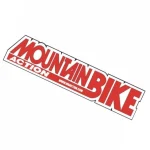Tips For Ultra-Endurance Rides
Going Long
 Gregg Dunham riding in the canyons of Wyoming.
Gregg Dunham riding in the canyons of Wyoming.
What’s the farthest you’ve ever ridden your mountain bike? Thirty miles? Fifty miles? One hundred miles? Whatever it was, it was probably one of the most memorable rides of your life, culminating in a tremendous sense of relief—and accomplishment—when you finished. What’s the secret to competing against other riders on journeys like that? To find out, we reached out to ultra-endurance racer Gregg Dunham and asked him to fill us in.
MBA: What is a self-supported, ultra-endurance mountain bike race?
Gregg Dunham: This isn’t your typical mountain bike race with tables of food and beverages and people patting you on the back. Self-support means just that—you must get from point A to point B on your own. That means everything from navigation to how you’re going to get food and water.
A self-supported, ultra-endurance mountain bike race, sometimes referred to as “bikepacking,” is often a multiday event that requires the rider to complete the entire route, unassisted and unsupported. It’s generally unorganized with the exception of a route and a start date and time. There is no entry fee, no support and no prize money. I like to think of these as a gentleman’s or gentlewoman’s agreement race, but sometimes they don’t even call it a race!
This is a true test of willpower and physical fitness. If you don’t do your homework through training and planning, you can find yourself in a world of hurt. Some riders show up to win; some just show up to finish.
 Author Gregg Dunham’s race rig for the Stagecoach 400.
Author Gregg Dunham’s race rig for the Stagecoach 400.
MBA: What’s it like to compete in one?
GD: These routes can be hundreds of physically and emotionally demanding miles. Competing in these events can be the most rewarding thing you’ll ever do, a true test of physical endurance and mental toughness. For some riders, even completing the route is a major accomplishment. For others, racing to be at the head of the pack is the goal. Both require extensive logistical planning. Where do you need to get water? Does it need to be filtered from a spring? Where is there a gas station or restaurant for food? Think of it as part mountain bike racing and part outdoor survival.
MBA: Why do you like doing it?
GD: The first self-support ultra race I competed in destroyed me physically. I think I ended with a black eye, a massively bruised hip, the worst saddle sore ever, and hands that were numb for weeks. I was also at the edge of my mental capacity the entire time. That being said,…




